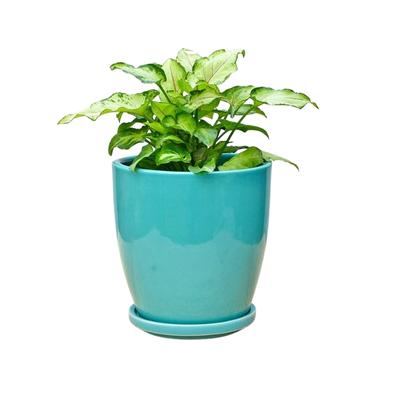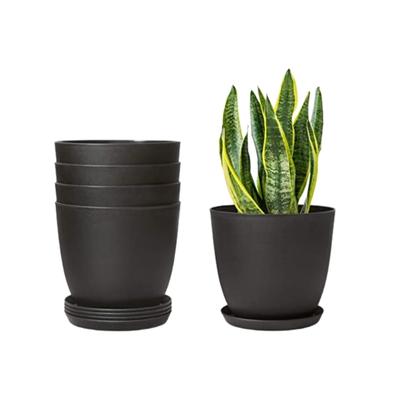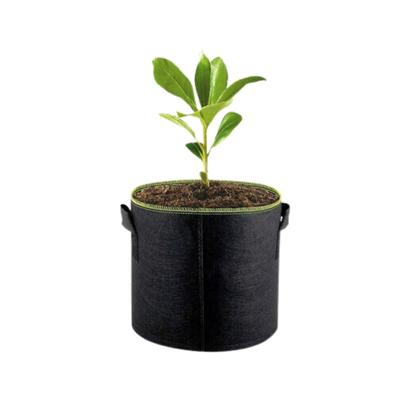The argument over whether to use ceramic, plastic, or fabric pots is an old one. While some gardeners only use ceramic or plastic pots, others adore fabric pots. Houseplants survive longer when their unique demands are satisfied, and each form of flower pot has benefits and drawbacks. The finest pots for houseplants mostly rely on the plant’s moisture requirements and how frequently you water it. Ceramic is an excellent all-around option. This article will walk you through the pros and cons of ceramic pots vs plastic pots vs fabric pots!
Different Kinds of Pots Available in Bangladesh
You can find several types of pots for your plants, here are some of the most significant kinds –
- Ceramic Pots: The soil in ceramic pots is often coated with a lacquer glaze to prevent it from drying up as quickly as it would in an unglazed clay or terracotta planter. Without any drainage holes at all, some ceramic pots are sold, which implies the roots will be kept in extremely damp conditions.
- Plastic Pots: Plastic pots are durable, portable, and adaptable. They come in every color of the rainbow, so they go with both indoor and outdoor decor. Due to its lack of the wicking properties of clay, plastic is a fantastic alternative for plants that enjoy moisture or for gardeners who water infrequently. Because they are made of inert materials, plastic pots are regarded as safe for growing plants. Because many are made of recyclable plastic, disposal is environmentally friendly when the pot is no longer needed (unglazed clay pots are fully recyclable as well).
- Fabric Pots: Fabric is used to create a new type of planter for growing plants. They are referred to as fabrics even though they are made of plastic and most of them are made of BPA-free polypropylene, which is very similar to landscape cloth. The substance has minute pores that let water and air pass through. Even very huge ones that are currently being marketed as rapidly raised beds are available in a variety of sizes. In Bangladesh, B J Geotextile grows bags come in different shapes and sizes according to the specific planting needs at an affordable bag price.
Ceramic Pots vs Plastic Pots vs Fabric Pots
All ceramic, plastic, and fabric pots have both advantages and disadvantages. Make sure you consider your options well before deciding on one.
Pros and Cons of Ceramic Pots

Compared to terra cotta ceramic pots, glaze ceramic pots withstand freezing temperatures better (although not as well as plastic or cloth pots); If they’re not dropped, inadvertently broken, or left outside in really cold weather, they’re the most gorgeous and long-lasting alternative of all pots (far below freezing). Ceramic terracotta pots are more affordable, more aesthetically pleasing, and have a neutral tint.
The most expensive alternative is glazed ceramic pots, but they are also the most fragile and difficult to transport, especially when filled with potting soil. Terracotta ceramic pots tend to be more expensive than fabric and plastic pots and are less resistant to freezing and cold weather. They can also crack or chip if dropped or struck.
Benefits and Drawbacks of Plastic Pots
Starting with the fact that plastic pots are rather inexpensive. The most economical option for a grower looking to save money is plastic pots. Since the rigid and inflexible plastic helps keep your medium compact and sustained, you don’t have to worry about the plastic pot slumping while your plant gets bigger and heavier. Plastic pots properly preserve roots. Your roots can’t expand downward and outward in a plastic container, which forces them to instead weave and wrap a robust root web around your medium.
The stiffness of plastic pots can only support you so far. Given its lack of giving, a plastic container with a huge, heavy plant inside is more likely to split or break. You can prevent this by making sure you have the appropriate size pots for up-planting into larger pots when your plants require it. Another disadvantage is the inability of plastic pots to breathe. Despite the fact that the bottom of most pots has drainage holes, these holes don’t do much to evenly aerate the plant.
Advantages and Disadvantages of Fabric Pots
Fabric pots carry on the tradition started by plastic pots by adding handles. This might be a compelling enough argument for larger cultivators to switch. If your plants have handles, you can pick them up with ease and save a lot of time and effort. Fabric pots typically last longer and maintain their quality despite the fact that both plastic and fabric pots are reusable. Although the material of a fabric pot may eventually deteriorate and stretch, it will last longer than a plastic pot, which would eventually fracture or break. Beyond the handles, a fabric pot differs from a plastic one in that it has the ability to breathe. Because the fibers are small enough to allow air to pass through, fabric pots are very highly aerated.
Sometimes, fabric pots allow for a little too much root expansion. While a plastic pot would keep your roots contained and typically result in wrapping, a fabric pot might let the roots grow through the threads in the pot. Blocking up the tiny apertures in the pot, can eventually restrict your roots and cause issues. Additionally, it will be more challenging to clean your pans afterward. The pot that your plants are in needs to help them as well. Last but not least, some growers are greatly discouraged from utilizing fabric pots due to the cost.
Conclusion
Ultimately, the choice of whether to utilize ceramic, plastic, or cloth pots is yours. Although cloth containers are always preferable due to their superior quality and environmental friendliness, plastic containers are likely to be less expensive. If you intend to grow trees for several years in the same container, fabric pots might be a better option because they reduce root problems. Ceramic pots with glazes are quite appealing and offer vibrant colors that contrast with the plants they are holding.



